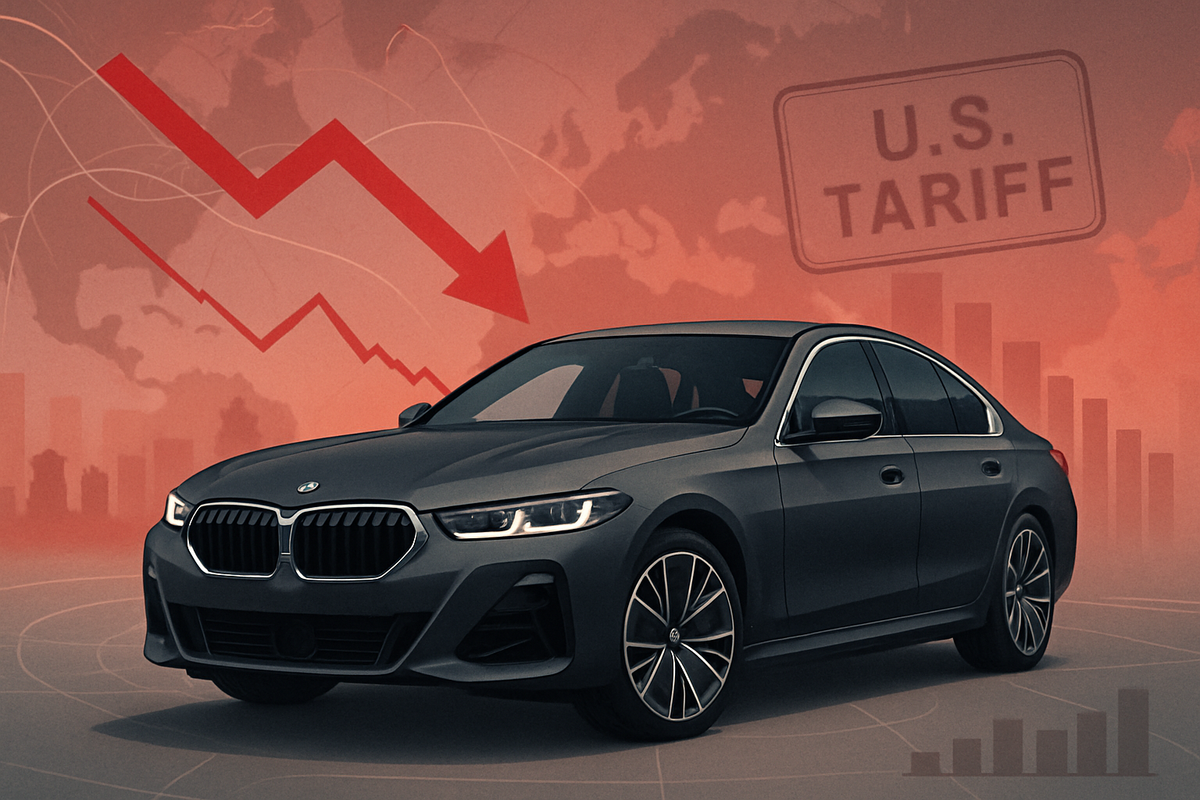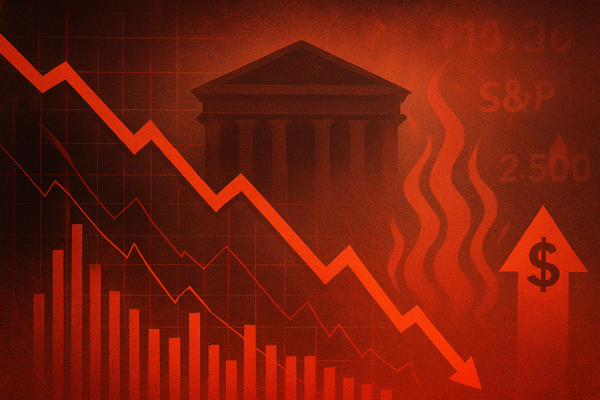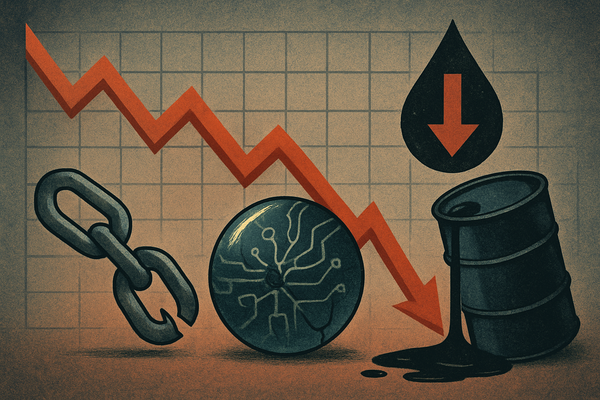BMW Slashes 2025 Earnings Forecast Amidst China Slowdown and Persistent US Tariffs

Munich, Germany – In a significant recalibration of its financial outlook, German luxury automotive giant Bayerische Motoren Werke AG (BMW) (XTRA: BMW) announced on October 7, 2025, a substantial cut to its 2025 earnings forecast. The revised guidance signals a more cautious stance for the year ahead, primarily attributing the downturn to an unexpected deceleration in growth within its crucial Chinese market and the ongoing financial burden imposed by U.S. import tariffs. This development sends ripples across the automotive sector, highlighting the volatile geopolitical and economic pressures currently shaping global trade.
The immediate implications of BMW's revised forecast are stark. The company now anticipates a slight decline in group earnings before tax for 2025, a notable shift from its previous projection of maintaining earnings at 2024 levels. Furthermore, the expected return on capital employed (ROCE) for its automotive business has been lowered to a range of 8% to 10%, down from an earlier 9% to 13%. Perhaps most impactful for its balance sheet, the delay in receiving significant customs duty reimbursements from U.S. and German authorities means free cash flow in the automotive segment is now expected to be around 2.5 billion euros, a stark contrast to the previously assumed 5 billion euros.
Navigating a Challenging Global Landscape: The Specifics Behind BMW's Revised Outlook
BMW's decision to revise its 2025 earnings forecast stems from a confluence of challenging factors. The slowdown in the Chinese market, which represents BMW's largest single market, has proven more persistent than anticipated. While sales in China stabilized in the third quarter of 2025, the company failed to achieve its targeted volume increase, leading to lowered sales expectations for the fourth quarter. This follows a notable 13.7% decline in Chinese sales during the second quarter of 2025, a performance overshadowed by gains in other regions. The intense competition from aggressive local EV players like BYD Company Limited (HKG: 1211), NIO Inc. (NYSE: NIO), and XPeng Inc. (NYSE: XPEV), coupled with a post-pandemic rise in consumer price sensitivity, has forced BMW to offer discounts to clear inventory, further impacting profitability. Adding to these woes, a reduction in commissions from Chinese banks for financial and insurance products is expected to necessitate financial support for dealers, weighing further on the bottom line.
Compounding the challenges from China are the enduring effects of U.S. import tariffs. As of March 4, 2025, the U.S. government imposed an additional 25% tariff on foreign-made cars and auto parts, escalating the total import tariff to 27.5% for many imported vehicles. BMW had initially harbored hopes for tariff reductions between the European Union and the United States, even assuming a retroactive drop from 10% to 0% from August 1, 2025. However, these expectations have not materialized. Instead, the company now projects that a significant three-digit-million figure in customs duty reimbursements from U.S. and German authorities will only be paid in 2026, not in the current fiscal year. This delay directly impacts 2025's free cash flow and is expected to burden the automotive segment's EBIT margin by approximately 1.25 percentage points for the full year.
The timeline leading up to this moment reflects a gradual accumulation of pressures. BMW had previously warned that these duties would have a "notable" impact on second-quarter earnings, signaling the mounting financial strain. While specific stock market reactions on October 7, 2025, are still unfolding, earlier reports indicated mixed investor sentiment following previous earnings calls, with some dips in share price. The key stakeholders involved include BMW's management board, its shareholders, and its extensive global supply chain and dealer network, all of whom are directly impacted by these revised financial projections. Despite the grim outlook, BMW has affirmed its commitment to a dividend payout ratio of 30% to 40% of net income and its share buyback program, perhaps a move to reassure investors amidst the uncertainty.
Shifting Fortunes: Who Gains and Who Loses in BMW's Wake
BMW's revised financial outlook is poised to create a discernible redistribution of fortunes across the global automotive landscape. Direct luxury competitors stand as potential beneficiaries, poised to capture market share should BMW's sales and profitability continue to face headwinds. Fellow German titans Mercedes-Benz Group AG (XTRA: MBG) and Audi AG (XTRA: NSU) (part of Volkswagen AG (XTRA: VOW3)), alongside Japanese premium brand Lexus (part of Toyota Motor Corporation (NYSE: TM)), could see an uptick in demand as discerning buyers seek alternatives. While the slowdown in China affects all European luxury brands, any specific weakness in BMW could allow these rivals to gain a larger slice of a challenging yet lucrative market. Moreover, high-performance and sports car specialist Porsche AG (XTRA: P911) might also witness increased interest in its niche offerings.
The electrification race also presents a distinct dynamic for winners. If BMW's struggles impede its investment and rollout of competitive electric vehicle (EV) models, companies with a strong EV focus are well-positioned to capitalize. Tesla, Inc. (NASDAQ: TSLA), with its established EV leadership and innovative technology, could further solidify its market position. Crucially, Chinese EV manufacturers like BYD Company Limited (HKG: 1211), NIO Inc. (NYSE: NIO), and XPeng Inc. (NYSE: XPEV), already aggressively gaining market share in China and expanding into Europe, stand to benefit significantly from any faltering by traditional luxury players. Furthermore, American luxury brands such as Cadillac (part of General Motors Company (NYSE: GM)), with their increasing emphasis on electrification and domestic manufacturing, could gain a competitive edge in the US market, particularly as European imports contend with higher tariffs.
Conversely, BMW's extensive supply chain and companies heavily reliant on the Chinese automotive market and European automotive exports to the US are likely to bear the brunt of the impact. A cut in BMW's earnings forecast often signals reduced production volumes or slower growth, translating directly to fewer orders for its myriad suppliers. Tier 1 automotive suppliers such as Robert Bosch GmbH, Continental AG (XTRA: CON), Magna International Inc. (NYSE: MGA), ZF Friedrichshafen AG, Thyssenkrupp AG (XTRA: TKA), and BorgWarner Inc. (NYSE: BWA), which provide critical components from braking systems to gearboxes, would experience a decline in demand. Raw material providers and logistics companies facilitating global transport between Europe, China, and the US could also see reduced volumes and revenue. Additionally, BMW dealerships, particularly in China and the US, might face lower sales and inventory turnover, eventually impacting aftermarket parts and service providers. The broader European automotive industry, with its significant dependency on the Chinese market, will also feel the ripple effects of BMW's challenges, especially for companies like Volkswagen and Volvo Car AB (STO: VOLCAR B) that also have substantial exposure to the region.
Beyond BMW: Unpacking the Wider Significance and Industry Ripple Effects
BMW's decision to recalibrate its 2025 earnings forecast is far more than an isolated corporate adjustment; it serves as a potent barometer for the complex and challenging landscape currently facing the global automotive industry. This event underscores several pervasive broader industry trends, including the costly and often turbulent transition to electric vehicles (EVs), the persistent economic headwinds in critical markets, and intensifying competitive pressures from new and established players alike. While BMW continues to pour resources into electric mobility, autonomous driving, and its 'Neue Klasse' platform, the projected slowdown in global EV sales growth to 7.4% year-over-year in 2025 highlights a universal struggle with EV adoption, driven by factors such as high costs, battery performance concerns, and inadequate charging infrastructure.
The challenges in the Chinese market, a primary driver of BMW's forecast cut, resonate deeply across the entire automotive sector. Muted consumer demand and weak sentiment, despite government stimulus, are impacting sales volumes for all foreign automakers. China's burgeoning dominance in EV production, with over 50% of 2025 sales expected to be electric, intensifies competition, forcing Western brands to adapt rapidly to local preferences and invest heavily in localized R&D. This dynamic, coupled with aggressive pricing strategies from rivals like Tesla (NASDAQ: TSLA), signals a broader squeeze on profitability for premium brands. Furthermore, the global economic slowdown, characterized by low consumer confidence and rising interest rates, is curbing overall consumer enthusiasm, particularly for higher-priced vehicles, exacerbating the industry's woes.
The regulatory and policy implications of BMW's situation are equally significant. U.S. import tariffs, which have seen duties on some European vehicles soar to 27.5%, are not just a BMW problem but a systemic challenge for all European automakers exporting to the U.S. The delay in substantial customs duty reimbursements further complicates financial planning across the industry. Concurrently, Europe's stringent 2025 emissions targets (93.6 grams of CO2 per kilometer) impose immense regulatory pressure, with the threat of substantial fines pushing automakers towards costly EV development, even as consumer demand for EVs remains volatile. This creates a delicate balancing act for policymakers, who must weigh ambitious environmental goals against the economic realities and viability of a foundational industry.
Historically, the automotive industry has weathered numerous storms, offering precedents for the current challenges. BMW's 2019 profit warning, also attributed to trade conflicts and immense spending on electric cars, serves as a direct parallel, demonstrating the persistent vulnerability to geopolitical tensions and the capital-intensive nature of technological transitions. The 2008-2010 automotive crisis, part of the Great Recession, and the early 1980s recession, both driven by economic shocks and shifting consumer preferences, illustrate the cyclical nature of the industry. These historical downturns consistently led to severe losses and forced automakers to initiate efficiency drives, restructure operations, and pivot strategically. BMW's current situation reinforces this long-standing characteristic, highlighting that the sector is inherently dependent on broader economic cycles and consumer income levels.
The Road Ahead: Navigating Uncertainty and Strategic Pivots for BMW and the Industry
BMW's revised 2025 earnings forecast sets the stage for a period of intense strategic adaptation, not just for the Bavarian automaker but for the wider global automotive market. In the short term, BMW faces immediate hurdles: the persistent sales slowdown in its critical Chinese market, the sustained impact of U.S. import tariffs, and the delay in significant customs duty reimbursements, which will significantly dampen its free cash flow for 2025. Compounding these are the inherent challenges of the EV transition, where electric vehicle production currently yields lower margins than traditional combustion engine models, and ongoing supply chain disruptions, including semiconductor shortages and volatile raw material prices. The company's immediate focus will be on managing these pressures, potentially through further cost efficiencies and targeted incentives in challenging markets.
Looking further ahead, BMW's long-term vision is anchored firmly in its ambitious "Neue Klasse" (New Class) platform. This foundational shift aims to redefine its leadership in electromobility and digital innovation. By 2030, BMW (XTRA: BMW) projects fully electric vehicles to constitute over half of its global sales, with the Neue Klasse platform promising more efficient, technologically advanced EVs, including the electric iX3 SUV expected in China by mid-2026. A crucial element of this strategy is the development of batteries that are 40-50% cheaper, potentially achieving margin parity with combustion engine models as early as 2026. Unlike some rivals, BMW's flexible multi-drivetrain strategy, encompassing EVs, hybrids, and combustion engines, allows it to adapt to varied market demands and potentially slower-than-expected EV adoption rates in certain regions.
Strategic pivots will be critical. BMW is making substantial investments in China's EV market, localizing Neue Klasse production and forging partnerships with tech giants like Huawei and Alibaba Group Holding Limited (NYSE: BABA) to bolster its AI and autonomous driving capabilities. This "local for local" approach is vital for regaining a competitive edge in the world's largest EV market. The Neue Klasse vehicles will integrate advanced software architectures, leveraging central "superbrain" systems to offer significantly more computing power and enhanced digital features, preparing for the era of software-defined vehicles and autonomous driving. These technological advancements, coupled with a commitment to sustainable supply chains and the eventual phasing out of traditional combustion engine models, underscore BMW's determination to raise its automotive EBIT margin to 8%-10% in the coming years, a notable increase from the revised 5%-6% for 2025.
For the wider automotive market, BMW's experience illuminates both profound challenges and burgeoning opportunities. Challenges include persistent economic strain, rising costs, and intense competition from new energy vehicle (NEV) manufacturers, particularly aggressive Chinese domestic brands. The global EV adoption slowdown, coupled with regulatory uncertainty surrounding tariffs and incentives, adds further complexity. However, significant opportunities abound in electrification, the burgeoning market for automotive AI software (projected to reach $200 billion by 2032), and the exponential growth of autonomous driving (from $60.3 billion in 2025 to $449 billion by 2035). Emerging markets also present new growth drivers, while the industry's shift towards "servitization" – offering mobility as a service and subscription-based features – promises new revenue streams, potentially adding up to $1.5 trillion to the automotive revenue pool by 2030. The resurgence of hybrid electric vehicles as a bridging technology also offers a viable path for manufacturers.
Potential scenarios range from a successful Neue Klasse rollout, solidifying BMW's leadership and inspiring other legacy automakers, to continued market headwinds leading to increased industry consolidation and intensified price wars. A scenario of rapid technological acceleration could see BMW leveraging AI and software-defined vehicles for significant competitive advantages, transforming the industry towards a "Transportation as a Service" model. Conversely, supply chain normalization and cost stabilization could ease pressures, improving affordability and boosting demand. Ultimately, the future demands agility, strategic innovation, and robust supply chain management from all players as the industry navigates electrification, digitalization, geopolitical factors, and evolving consumer preferences.
Conclusion: Navigating a Turbulent Road Ahead
BMW's recent decision to cut its 2025 earnings forecast serves as a stark reminder of the intricate and often volatile forces shaping the global automotive industry. The key takeaways are clear: persistent slow growth in the vital Chinese market, exacerbated by fierce local EV competition, and the ongoing financial drain of U.S. import tariffs are significantly impacting profitability and free cash flow. This revision, announced on October 7, 2025, highlights a challenging environment where even established luxury giants must recalibrate expectations amidst geopolitical tensions and shifting consumer demands. The delay in substantial customs duty reimbursements further complicates BMW's immediate financial picture, pushing anticipated liquidity boosts into the next fiscal year.
Moving forward, the market can anticipate continued volatility. BMW's adjusted outlook is not an isolated incident; other German automakers like Volkswagen AG (XTRA: VOW3), Porsche AG (XTRA: P911), and Mercedes-Benz Group AG (XTRA: MBG) have also faced similar pressures, underscoring systemic challenges within the luxury automotive segment. The transition to electric vehicles, while a long-term imperative, continues to be a costly endeavor with evolving consumer adoption rates and intense price competition, particularly from agile Chinese manufacturers. The market's resilience will be tested by the interplay of global trade policies, regional economic performance, and the industry's ability to innovate and adapt at speed.
The lasting significance of BMW's forecast cut lies in its demonstration of the fragility of profit margins in a rapidly transforming industry. It emphasizes the critical need for adaptable corporate strategies and robust supply chain management in an era defined by geopolitical uncertainty and technological disruption. BMW's long-term success hinges on the triumphant rollout of its "Neue Klasse" vehicle architecture, which promises to redefine user interaction, electrification, and battery technology. The ability to achieve margin parity for its EVs and successfully localize production and partnerships in key markets like China will be paramount to re-establishing robust profitability and maintaining its competitive edge.
For investors, the coming months demand vigilance. Closely monitor developments in global trade policy, particularly any shifts in U.S. and EU tariff negotiations, which could significantly impact the entire sector. Keep a keen eye on BMW's sales performance and market share in China, especially for its electric vehicle offerings, as this remains a critical battleground. Track the progress and market reception of the "Neue Klasse" platform, as its success is central to BMW's future. Additionally, observe the company's free cash flow generation and the timely receipt of the delayed customs duty reimbursements in 2026. Finally, assess BMW's strategic measures to enhance operational efficiency, manage debt, and diversify revenue streams beyond traditional car sales. While BMW has reaffirmed its commitment to its dividend payout ratio and share buyback program, the path ahead requires careful navigation through a complex and evolving automotive landscape.
This content is intended for informational purposes only and is not financial advice



